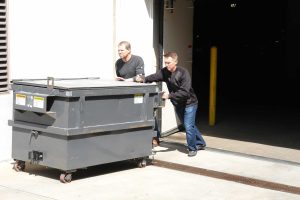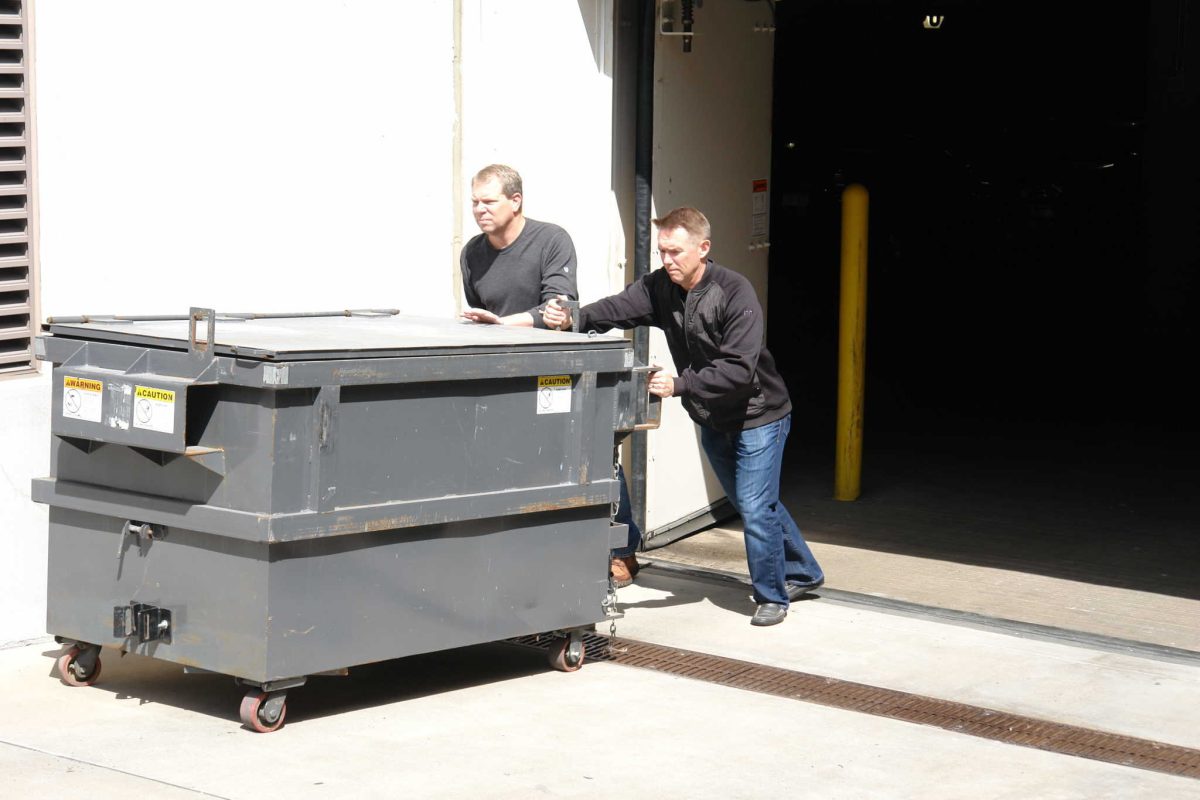
Pushing and pulling may seem like basic activities, but according to the CDC’s National Institute for Occupational Safety and Health (NIOSH) they are behind roughly 20 percent of workplace injuries. Not only do they increase risk of injury, pushing and pulling inflict stress on the body’s musculoskeletal system.
Studies show that these injuries are a result of poor body mechanics rather than unsafe work conditions. Share these techniques with employees to reduce risks involved in pushing and pulling.
Safety Tips for Pushing and Pulling
1. Whenever possible, push rather than pull to relieve stress on lower back muscles and face forward while moving.
2. Be realistic about the effort involved in transporting a heavy load. Consider the task carefully and ask for help when you need it.
3. Make sure the dumpster puller or other mover is in good operational condition. Determine the best route to travel and inspect it beforehand for any obstructions.
4. Use a slow but steady movement when starting and stopping a load. Sudden exertions can add undue stress to muscles and joints.
5. Always use proper body mechanics:
- Hands should be chest height and shoulder width apart.
- Contract your abdomen, maintaining a slight arch in your lower back.
- As you bend your elbows, retract your shoulder blades and push your chest forward.
- Keep feet flat and shoulder width apart.
Reduce Pushing and Pulling Injuries with Electric Movers from DJ Products
Our WasteCaddyLite dumpster puller is ergonomically designed to let a single employee safely move up to 2,000 pounds. Visit our website to learn more about our full line of battery-powered tugs, pullers and movers.
